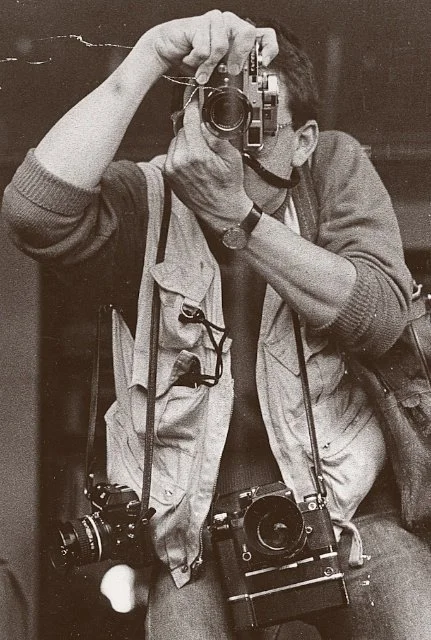Compiegne

We are working on a long-term project concerning shipping, I won't elaborate too much on that, nothing solid yet, but this photograph is part of that project, as an example of the style we might want to achieve.
What I want to show here is how this particular lens, the Carl Zeiss Biogon ZM 2.0/35mm, works in this kind of light.
First of all, the lens is superb.
No need for the boring details, but I love it.
In my view, a lens is all about character, or better, personality. Character is sometimes read as another word for ‘flawed’. I don't care if one lens is sharper then another one, or how much coma is left in the corners at a specific aperture. Boring data.
In my way of making a photograph, it is all about prediction.
I need to predict what is going to happen next in order to be ready to actually capture that moment.
If not, I will be too late, I missed the moment. My camera must be ready to capture the instance. Prepared, ready, focused, exposure set, in front of my eye, you know the drill. I must be able to predict the near future in order to take a picture.
Prediction is also what I use for the technical stuff.
If I expose like this, I think it will come out like that ...
If I use this film-developer, or set my digital camera so-and-so, I think the result will enable me to ...
If I use this lens, the result will look like ...
Look and learn, make mistakes, experiment, look, look again.
And then, one day, maybe, you will recognise the character of your lens. It's peculiar behaviour, its temperament. I quote HCB, "your first 10.000 photographs are your worst"
Every lens type is designed to perform in a very specific way. How specific depends a little per manufacturer. Leica lenses are famous for their performance and, oh dear, character. You can find tons of literature on that, per lens, per build version, per factory where they originate from.
But other lenses have similar behaviour, maybe not as wel documented, so you will have to find out for yourself.
Your own lens is unique, has it's history. Had the factory worker an off day, or was she trying to make her best assembly ever? Are all elements aligned as designed? How much misalignment was calculated into the design (that is where this famous price difference between some manufacturers starts to come in play) ? There are lot of factors that make your specific lens unique.
Which brings us to the Carl Zeiss Biogon. My Biogon.
Sharp as a needle, very particular micro-contrast, very different from, just to name one, a Leica Summicron 35mm (notice that a lot of German lens types have their own name, there is a reason for that).
Sharpness is overrated. It is important as in "it should not be totally worthless", but the last millimetres in the far corner, really, who cares. The way the sharpness "works out", that does make a difference.
My Biogon is extremely fine detailed. If you want a coarse, rough "Tri-X" image, look somewhere else. By the way, real Tri-X film negatives are not that rough at all if you don’t want them to be.
But this lens has one very important and for me limiting quality, and it is very visible in the photograph.
Have you spotted it?
It is very visible in the right top corner, where the bridge meets the tree.
A very specific type of Flare.
Here is a crop:

The light starts to creep over the bridge beams and around the tree in the far right.
Mind you, this is not taken at full aperture, it has nothing to do with that.
In this lens, this phenomenon occurs when the light source is at a certain angle in relation to the lens, but outside the image. The lens has no problems when the light source is inside / part of the image.
Most reviews of the Biogon 2.0 ZM miss this feature completely, only Lloyd Chambers noticed it (and his reviews are not free), as far as I know.
(Another reason to be very cautious when reading a review, any review. How good is the reviewer? Most of them, even very popular ones, sorry to say, seem to have have limited experience and only appear to copy each others ideas,
Back to the Biogon.
This flare is build in, nothing to do about it, other then (re)moving the light source. A good lens hood would do the trick, unfortunately the Zeiss one is round (and very solid, by the way) an therefore leaves a little to much room on the top and bottom of the image format, the "long sides" if you want. A rectangular one would maybe solve the issue.
This flare is very difficult to predict, especially on a rangefinder, where you do not look "through" that actual lens that will take the picture. On a reflex, you would probably see it in the finder, and you could act, move the camera a little, block the light source with your hand, whatever.
Not so on a rangefinder.
A very very nice lens, but with an issue. For me, an unpredictable one, and maybe a reason to switch to a Leica Summicron 35 one day.
If I could predict the phenomenon a little more, it would be a real nice feature. This definitely works great for some type of photographs.
I already know that I will miss my Biogon 2.0 very much indeed, when that day comes.
Leica M6

